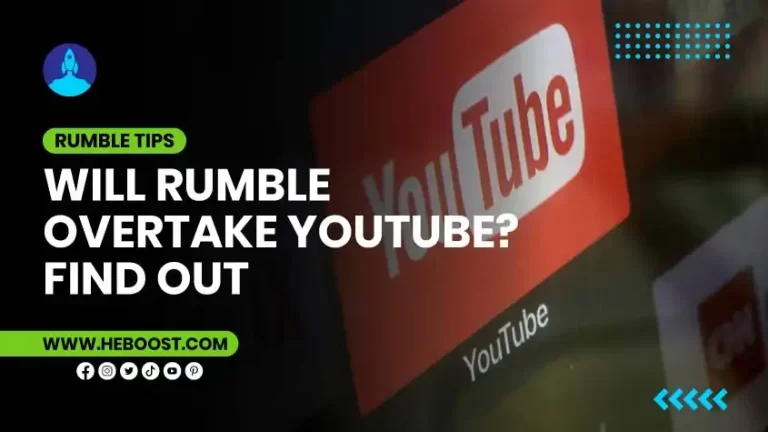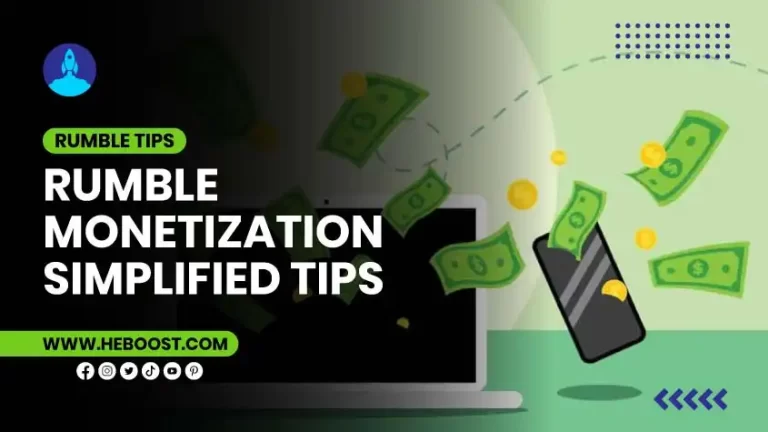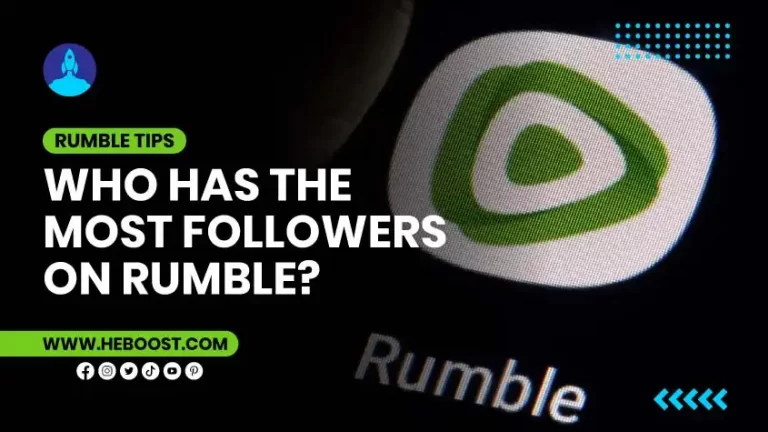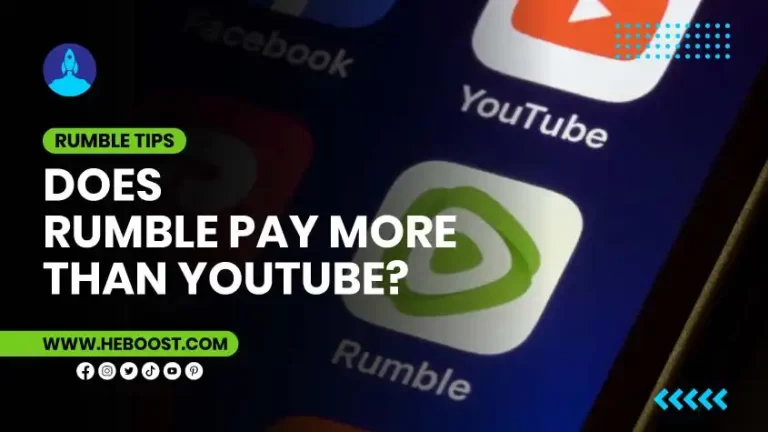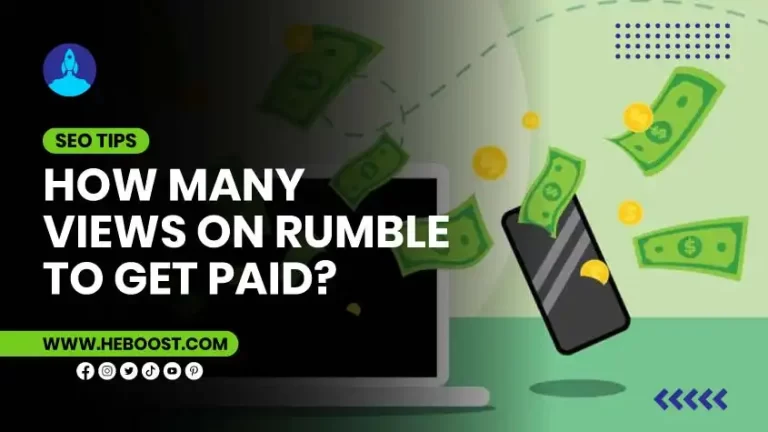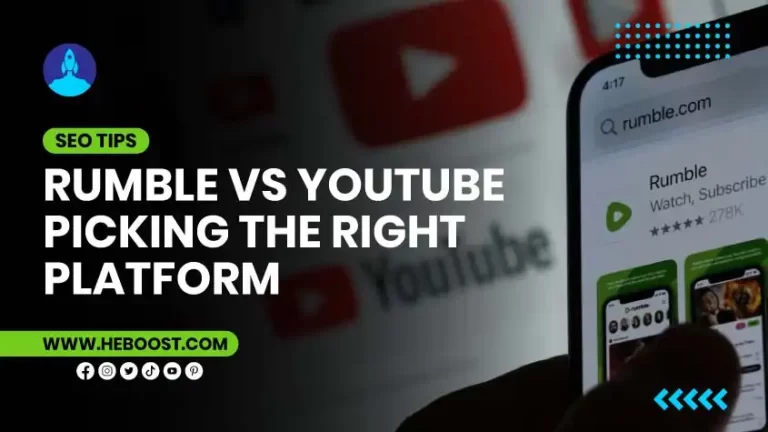Grow Fast: Rumble vs Kick, What’s Best for You?
Choosing the right platform for your creative content is akin to a chef selecting the perfect ingredients for a signature dish. Each choice can dramatically alter the outcome. Today, we’re diving into online content platforms, focusing on two notable players: Rumble vs Kick. With a collective experience of over five years in the digital content sphere, we’ve navigated the ups and downs, twists and turns, and we’re here to share our wisdom. Our aim? To guide you through the maze of options and help you pinpoint where to showcase your digital masterpieces.
Rumble has emerged as a sanctuary for content creators who value freedom and simplicity, offering a platform where videos can be uploaded, shared, and monetized without getting tangled in overly complex guidelines. Think of Rumble as the laid-back friend encouraging you to be yourself without fear of judgment. Kick, meanwhile, strides onto the scene with a focus on live streaming, aiming to create a vibrant community of creators and viewers alike. The enthusiastic buddy is always ready to chat, share stories, and bring people together. Both platforms have charms, but which one will be your digital home? Let’s find out.

Rumble vs Kick, The Contenders: A Quick Overview
Rumble: The Freedom Fighter
Rumble enters the arena with a straightforward proposition: it champions the cause of free speech and minimal content restriction. This platform has become a haven for those who feel stifled by the stringent regulations of other sites. It’s not just about being able to say what you want; it’s about the broader implications for content diversity and accessibility. With Rumble, creators have found a space where their content can breathe freely, reach a diverse audience, and generate income without worrying about the shadow of censorship looming over their creative decisions.
Moreover, Rumble’s approach to content distribution is worth noting. By emphasizing the value of each piece of content, regardless of the creator’s fame, Rumble levels the playing field. New creators can find themselves alongside established names, each video given a fair shot at success based on its merits. This democratic approach has garnered Rumble praise from the creator community, with many lauding it as a breath of fresh air in an otherwise competitive industry.
Kick: The Community Builder
On the flip side, Kick throws its hat in the ring with a laser focus on live streaming and real-time interaction. This platform is tailor-made for creators who thrive on immediate feedback and the thrill of live engagement. Kick’s features are designed to enhance the connection between creators and their audience, making every stream feel like a gathering of friends. It’s an environment that fosters community and encourages active participation from viewers, turning passive watchers into active participants.
Kick’s commitment to building a vibrant community is seen in its user-friendly interface, which simplifies the streaming process for creators while making it equally easy for viewers to engage with content. The platform’s innovative tools and features aim to create a seamless experience for both parties, enhancing the sense of connection and belonging. This emphasis on community has attracted a diverse group of creators and viewers eager to be part of a platform that values real-time engagement and fosters a sense of unity.
Recommended Reads: Master Rumble Video SEO: Grow Your Channel Fast!
Rumble vs Kick: The Showdown
As we gear up for a closer comparison, remember that the best choice depends on your content style, engagement preferences, and goals. Let’s break down the specifics, shall we?
Streaming Capabilities
Regarding Rumble vs Kick streaming, the battlefield has distinct strengths. Kick, designed from the ground up with live streaming in mind, shines brightly for creators who live for the rush of real-time interaction. Its platform is a paradise for streamers, offering tools that make live broadcasts both possible and polished, and engaging. Imagine having a virtual studio at your fingertips, where you can interact with your audience, receive immediate feedback, and adjust your content. That’s the power Kick brings, making it a formidable contender for live content creators.
Though traditionally more focused on video uploads, Rumble has yet to sit back in the streaming race. The platform has introduced live streaming capabilities, recognizing the growing demand among creators to connect with their audience in real-time. While Rumble’s live streaming features are evolving, they offer a solid foundation for creators looking to diversify their content. The essential advantage here is Rumble’s broader approach to content distribution, which can help live streams reach a wider audience beyond the immediate live viewers. This dual approach caters to creators who want the best of both worlds: the vibrancy of live interaction and the longevity of traditional video content.
Recommended Reads: Epic Rumble User Growth Guide for Newbies & Pros!
Community Engagement
Deciding between Rumble or Kick depends on how you envision your interaction with your audience. Kick’s model is built around fostering a lively and engaging community. It’s perfect for creators who thrive on immediate interaction and enjoy building relationships with their audience in real-time. The platform’s chat features, audience participation tools, and interactive elements make each livestream an event, bringing creators and viewers closer together. This engagement goes beyond simple viewership; it creates a dynamic and interactive experience where viewers feel like an integral part of the content creation process.
Rumble’s approach to community engagement is more varied, offering a mix of traditional video content with live interaction options. While it may specialize in something other than the live stream atmosphere to the extent of Kick, Rumble excels in creating a diverse community of viewers and creators. Its algorithm is designed to introduce viewers to new content, helping to build a creator’s audience over time. This model benefits creators who prefer producing evergreen content that continues to attract viewers long after it’s posted. In essence, Rumble fosters a community that grows organically, driven by content discovery and shared interests.
The choice between Kick and Rumble hinges on your preference for real-time engagement versus long-term audience building. Both platforms offer unique avenues for connecting with viewers, but the method and immediacy of that connection differ significantly. Whether you’re a live stream fan or a creator of timeless video content, understanding these nuances is critical to choosing the right platform for your creative expression. Let’s move on to see how these platforms stack up in reach, visibility, and, importantly, the potential for monetization.
Recommended Reads: Rumble Monetization: Simplified Tips for New Channels!
Platform Reach and Visibility
In the digital coliseum where Rumble vs Kick vs Twitch battle for supremacy, understanding each platform’s reach and visibility is crucial for creators aiming to maximize their audience. With its commitment to democratizing content distribution, Rumble offers a unique advantage. Its algorithm is designed to favor the already famous and give every piece of content a chance to be seen. This approach can catapult emerging creators into the spotlight, offering visibility that might be harder to achieve in more saturated environments. Rumble’s reach extends beyond its platform, as content often gets shared across social media, further amplifying creators’ visibility.
Conversely, Kick, while newer to the scene, is rapidly making a name for itself, especially among creators and viewers looking for a more interactive and community-focused experience. Its fresh perspective on live streaming, combined with less saturation compared to giants like Twitch, means creators have a golden opportunity to stand out and grow their audience from the ground up. The platform is investing heavily in features that enhance live streams and encourage viewer participation, making each stream a potential viral sensation.
When compared to Twitch, both Rumble and Kick offer distinctive advantages. With its vast user base, Twitch presents a formidable challenge for new creators trying to get noticed among thousands of live streams. The dense competition can make it difficult for emerging talents to find footing. Rumble’s algorithmic approach to content discovery and Kick’s focus on creating a tight-knit community present compelling alternatives for creators seeking visibility and growth without getting lost in the crowd.
Recommended Reads: What Does CPM Mean on Rumble? Cash Tips!
Monetization: Show Me the Money
Whether Rumble or Kick is better depends on which platform can fill your pockets while you fill hearts and minds with your content. Rumble has established a clear, transparent monetization structure that rewards creators based on the viewership and engagement their content receives. This model is attractive for its simplicity and the potential for significant earnings, especially for content that resonates widely. Rumble’s monetization policies are designed to support creators of all sizes, ensuring that even smaller channels can earn from their work.
On the other hand, Kick is still refining its payout models but has made clear its intention to offer competitive rates to attract and retain creators. The platform is exploring innovative monetization strategies, focusing on direct viewer support, subscriptions, and interactive features that enable fans to contribute financially during live streams. This approach not only diversifies income streams for creators but also strengthens the bond between them and their audience, making viewers active participants in the success of their favorite creators.
Recommended Reads: Easy Guide: How to Download Rumble Videos Fast!
Rumble vs Kick Payout: The Bottom Line
When it comes to Rumble vs Kick payout, both platforms are striving to offer compelling financial incentives to creators. Rumble’s established payment model provides predictability and security for creators, making it an attractive option for those looking to monetize evergreen content. Kick, while newer to the monetization arena, presents exciting possibilities for creators willing to dive into the world of live streaming and build a community that’s eager to support them financially.
Choosing between Rumble and Kick for monetization will depend on your content strategy, audience engagement preferences, and how you envision building your community. Each platform offers unique pathways to monetization, with Rumble focusing on broad viewership and Kick emphasizing direct community support. As the digital content landscape continues to evolve, Rumble and Kick are positioning themselves as viable, profitable platforms for creators ready to monetize their passion.
With the landscape of digital content creation constantly shifting, staying informed about these platforms’ offerings, updates, and community feedback is critical to making the best decision for your creative journey. As we wrap up this comparison, let’s turn our attention to some of the most pressing questions creators like you might have.
Frequently Asked Questions
Which platform is more accessible to start with for a newbie?
For newcomers dipping their toes into the vast ocean of content creation, Kick might be the slightly more navigable water. Its focus on live streaming and user-friendly interface make it an inviting space for those looking to connect with an audience in real time. The platform’s design encourages interaction and community building, which can be incredibly rewarding for new creators seeking immediate feedback. However, Rumble’s straightforward video upload and monetization process also offer a welcoming environment for beginners who prefer producing videos over live content. Your choice should reflect your comfort level with live interaction versus pre-recorded content creation.
Can I use both platforms simultaneously?
Absolutely, and doing so might be a wise strategy! Diversifying your online presence can maximize your reach and income. You can enjoy the best of both worlds by leveraging Rumble’s video content strengths and Kick’s live-streaming capabilities. This approach allows you to cater to different audience preferences and explore various content formats, enriching your creative portfolio. Remember that balancing content creation across multiple platforms requires time management and planning. Still, the potential rewards in audience growth and monetization are well worth the effort.
Which platform offers better support for creators?
Both Rumble and Kick are committed to supporting their creators, but they do so in slightly different ways. Rumble offers a robust support system with resources to help creators optimize their content for better reach and monetization. Kick, focusing on fostering a tight-knit community, provides tools and features that encourage viewer interaction and support during live streams. The choice between the two depends on what type of support you value more: Rumble’s resources for content optimization or Kick’s tools for enhancing live viewer engagement.
How do I decide which platform is best for me?
Consider your content style, preferred method of engagement, and monetization goals. Rumble might be your go-to if you excel in creating engaging, evergreen video content and seek a platform that values free expression. On the other hand, if you thrive on the immediacy of live interaction and wish to build a closely-knit community around your content, Kick could be your platform. Experimenting with both platforms can also provide valuable insights into where your content resonates most, helping you make a more informed decision.
Wrapping Up
In the bustling world of content creation, choosing between Rumble and Kick comes down to understanding your unique voice as a creator and how you want to connect with your audience. Both platforms offer distinct advantages, whether it’s Rumble’s commitment to freedom of expression and its democratized approach to content distribution or Kick’s emphasis on live interaction and community building. The decision isn’t about picking the “better” platform in absolute terms but instead selecting the one that aligns with your content creation goals, style, and the type of community you wish to cultivate.
As you embark on or continue your content creation journey, remember that flexibility, experimentation, and engagement are crucial to growth and success. Whether you lean towards Rumble’s expansive video platform or Kick’s dynamic live-streaming capabilities, your ability to adapt and resonate with your audience will pave the way for your digital success. Dive into each platform with an open mind, explore their unique features, and let your creativity flourish. After all, the best platform for you is where your content finds a home, and your audience feels most engaged.

